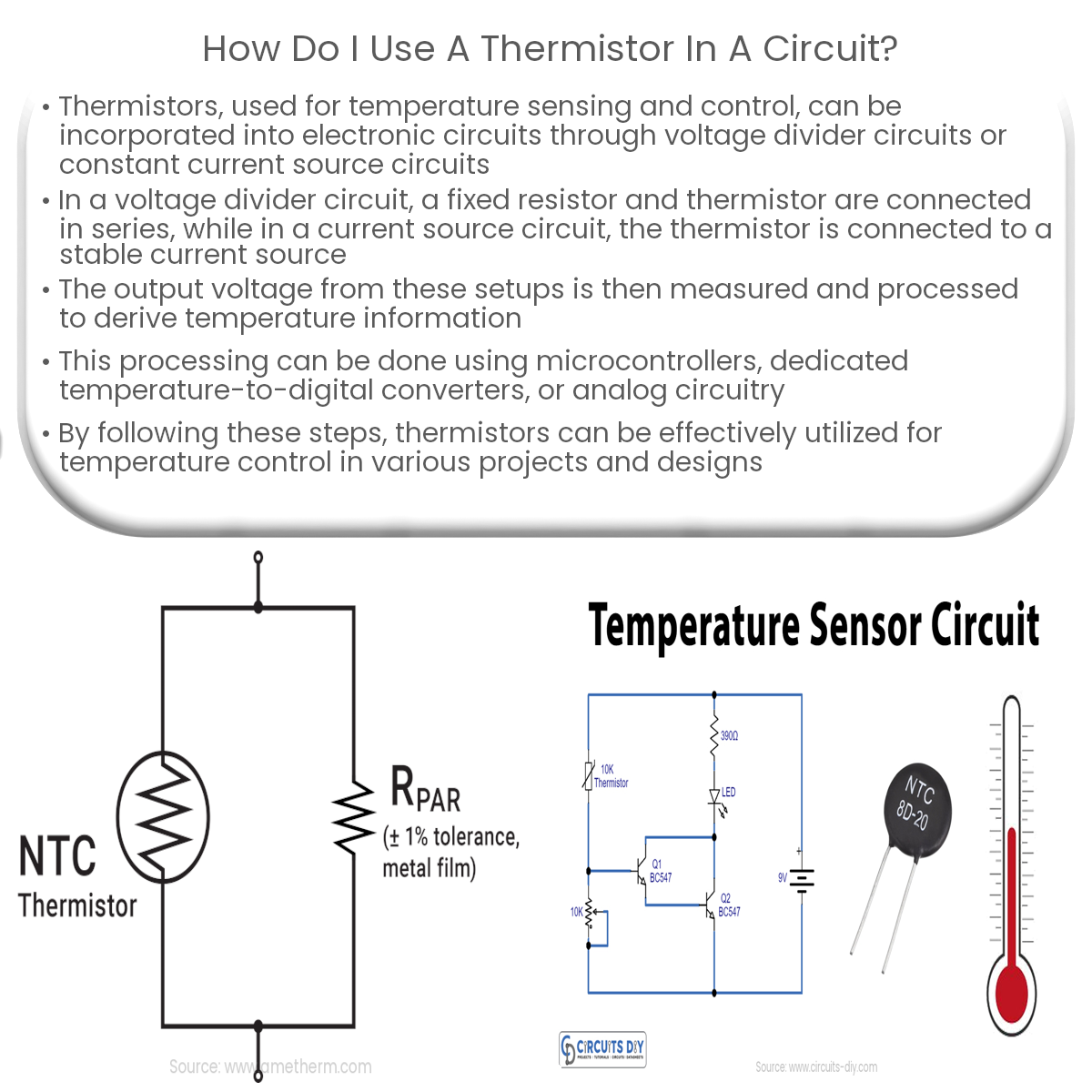To use a thermistor in a circuit, create a voltage divider or constant current source, measure output voltage, and process the signal for temperature.
Using a Thermistor in a Circuit
Thermistors are widely used for temperature sensing and control in electronic circuits. In this article, we will discuss how to use a thermistor in a circuit, including the necessary components and steps for proper implementation.
Understanding Thermistor Circuits
To use a thermistor effectively, it is crucial to convert its resistance into a usable voltage signal. This is typically achieved using a voltage divider circuit or a current source. The output voltage is then measured and processed to obtain temperature information.
Voltage Divider Circuit
A simple way to use a thermistor in a circuit is to create a voltage divider with a fixed resistor. The steps to set up a voltage divider circuit are as follows:
- Select a fixed resistor: Choose a resistor with a value close to the thermistor’s resistance at the midpoint of the desired temperature range for better sensitivity and linearity.
- Connect the thermistor and resistor in series: Connect one end of the thermistor to the positive supply voltage and one end of the fixed resistor to the ground.
- Measure the output voltage: Connect the junction of the thermistor and fixed resistor to an analog-to-digital converter (ADC) or an op-amp circuit for further signal conditioning and processing.
Current Source Circuit
An alternative method for using a thermistor in a circuit is with a constant current source. This approach can improve temperature measurement accuracy by minimizing self-heating effects. The steps to set up a current source circuit are as follows:
- Create a constant current source: Use an op-amp, a transistor, and a reference resistor to generate a stable current source.
- Connect the thermistor to the current source: Connect the thermistor in series with the current source, allowing a constant current to flow through it.
- Measure the voltage across the thermistor: Connect the thermistor to an ADC or an op-amp circuit for voltage measurement and signal conditioning.
Signal Conditioning and Processing
After obtaining the output voltage, further signal conditioning and processing may be necessary to convert the voltage into a temperature value. This can be accomplished using microcontrollers, dedicated temperature-to-digital converters, or analog circuitry.
Conclusion
Using a thermistor in a circuit involves setting up either a voltage divider or a current source, measuring the output voltage, and processing the signal to obtain temperature information. By following these steps, you can effectively utilize thermistors for temperature sensing and control in your projects and designs.


